The Lancia Ardea
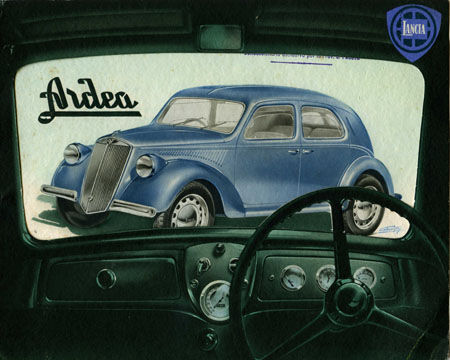
Lancia Ardea
Car ownership in Italy during the 1930s was largely confined to the wealthy and the very wealthy. While Italy’s beautiful people rattled their jewellery in appreciation of voluptuous model-draped show-cars at the Villa d’Esté Concours, Fiat’s 501 and 509 models had mobilised a whole new class of family motorists. The introduction in 1936 of Fiat’s 500 ‘Topolino’ had extended the privilege, but only to very small families. Fiat’s 508 ‘Balilla’ – eager in all its forms – was always cramped.
Post-Depression inflation meant that fuel costs were prohibitive, which explains the immediate and universal appeal of the Topolino. Lancia identified a niche for an extremely fuel-frugal but genuine four-seater car, and so designed and built one in the image of its established Aprilia model, introduced in 1937.
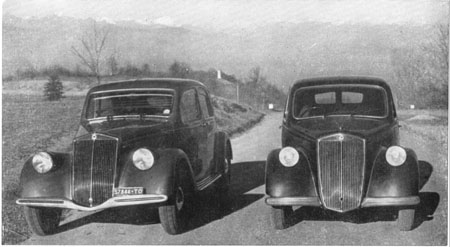
Lancia Ardea
The ‘Ardea’ received rave reviews when introduced in 1939. While lacking the Aprilia’s independent rear suspension, the new car broke new ground in enough areas to qualify for description as ‘revolutionary’. It imitated the Aprilia’s immensely strong pillarless all-steel monocoque construction; offered accommodation for at least four adults (its body was only 90mm narrower and 340mm shorter than its larger sibling); and was driven by Lancia’s smallest-ever engine of just 903cc.
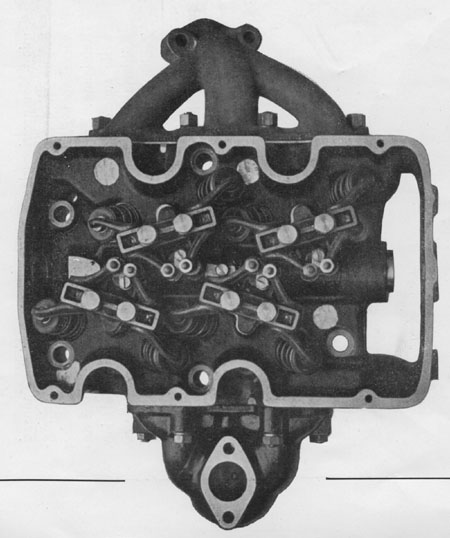
Lancia Ardea
Undoubtedly the Ardea’s most outstanding feature at the time of its introduction was this jewel of an engine – inspired by the great Vittorio Jano – producing 29 bhp at 4600 rpm, sufficient to enable the little car to reach 108 kph. More importantly, it sipped expensive petrol at the rate of 6-7 litres per 100 kms, compared to 10 litres for the Aprilia.
Always a performer out of all proportion to its size, the Ardea’s 65×68 mm V4 engine used a central chain-driven overhead camshaft operating Lancia’s patented valve system, allowing hemispherical combustion chambers. Lancia’s sliding pillar suspension was utilised at the front, long semi-elliptics at the rear, and with shock absorbers all round. Brakes were hydraulic drums, and steering was by worm and sector. Lighter and more nimble than even the lauded Aprilia, the little car steered and handled superbly. The noted motoring journalist Ronald ‘Steady’ Barker, although now in his 80s, still owns one and drives it with vigour, recalling that even on Monte Carlo Rally retrospectives, what the car lacked in straight-line power it more than traded for outstanding roadholding.
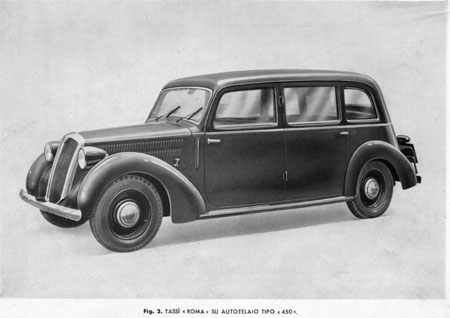
Lancia Ardea
As was Lancia’s habit, the new model was built in a bewildering range of variants. For example the factory-built Aprilia-esque berlinas were dubbed Tipo 250, while Tipo 350 were rolling chassis supplied to outside coachbuilders, and Tipo 450 were purpose-built people carriers with extended frames, which became known as the Rome Taxi (or Tassi Roma).
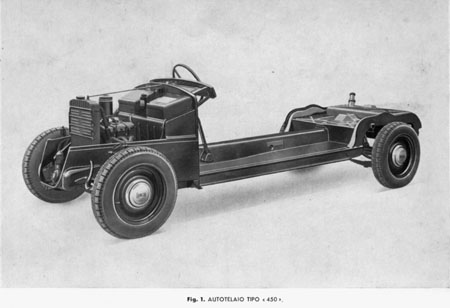
Lancia Ardea
The earliest first series of factory-built Ardea berlinas were supplied with an externally accessible spare wheel locker just above the rear bumper, but with no outside access for luggage; suitcases were hefted over the back seat squab onto the luggage platform. Shortly after the car was introduced, a separate opening luggage locker was provided.
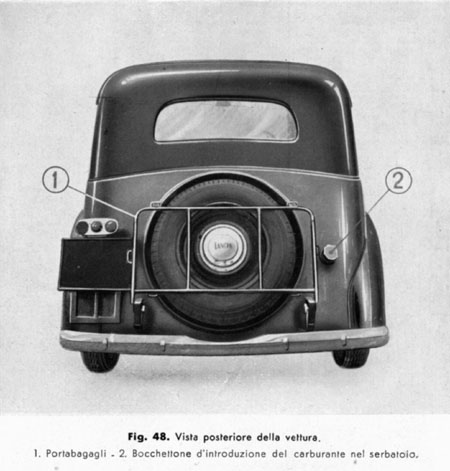
Lancia Ardea
War interrupted production of the model, which was however continued as Tipo 550 and 650, these being light vans and light trucks respectively, and built principally for the Italian military. Surprisingly their engines were slightly detuned – producing 26 bhp at 4500 rpm on a marginally lower compression ratio, but still using a single downdraught Zenith carburettor. The Tipo 800 series, introduced in 1941, provided the platform for coachbuilt versions which included tiny ambulances. Companies like Viotti and even Bertone built limited-quantity specialist bodies on the Tipo 350 chassis.
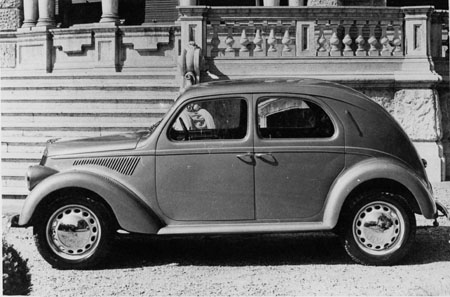
Lancia Ardea
Production of the passenger cars recommenced very early following War’s end, with the virtually identical second series berlinas built from 1945. Then came what may be regarded as the Ardea’s crowning achievement; the inclusion in the third series of what was arguably the world’s first 5-speed transmission in a production car. Postwar fuel prices (and availability) were even more rarefied than previously, and Lancia’s motivation was the promise of even greater fuel efficiency, rather than seeking higher maximum speed. In fact a late series Ardea will usually run as fast in 4th as it will in overdrive 5th, whose ratio (1:0.895) was selected for its ability to maintain road speed at lower engine revolutions, rather than lift top speed. Always a delight to use, the all-unsynchronised ’box made the little car even more fun to drive, and multiplied the versatility of the commercial variants.
The claim that this was the world’s first 5-speed gearbox in a production car is made with some trepidation, since I can find nothing to gainsay such claim, nor anything to verify it; Ferrari’s 5-speed Tipo 166 was, like the third series Ardea, marketed in 1948, but since only a tiny handful were built, it hardly qualifies as a production car. Alfa’s extensive use of such transmissions did not begin until 1955, and they were otherwise found only in purpose-built racing cars.
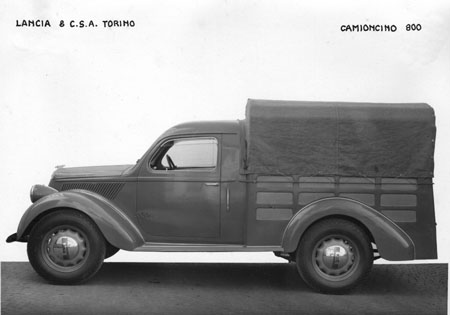
Lancia Ardea
What is beyond dispute is that, from the third series, the commercial variants (Tipo 550/650/800) – also fitted with the 5-speed gearbox – were most certainly the first light commercials to use such a transmission. The new cars also had 12-volt electrics rather than the 6-volt system originally fitted. The split rear window of the early cars was changed to a one-piece rear screen, and the vestigial roof fin was abandoned.
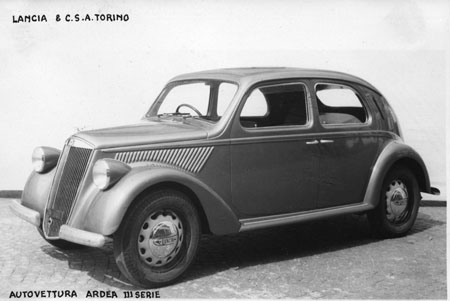
Lancia Ardea
For the fourth series cars introduced in 1948, the cast-iron cylinder head was replaced with one of alloy (the 100B engine), allowing a modest increase in power to 30 bhp at 4600 rpm. Speed in fifth for the factory berlina lifted to a genuine 110 kph, which Steady Barker claims could be maintained indefinitely.
The Ardea was embraced by the market inside and outside Italy more enthusiastically than any previous Lancia. The model was campaigned in European countries, and particularly in Spain, which suffered fuel scarcity and prices very similar to those of Italy. Some 22.541 berlinas and taxis were produced in four series, while 8.721 of the handsome little commercials were built between 1941 and 1953.
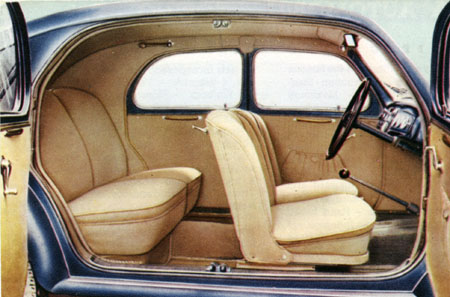
Lancia Ardea
By 1953 however, the Ardea’s separate wings and headlamps looked decidedly dated compared to the full width body-styles then being pioneered by other Italian makes, and work began on its replacement. What became the Appia was another brilliant and competent design, which confirmed Lancia’s belief that a beautifully-made small car would always find buyers. Alfa Romeo appropriated the name ‘Giulietta’ for its 1.290cc small car in 1954, but if any car deserves to be known as ‘The Little Jewel’, methinks it is the Ardea.
Bruce Lindsay /9.2013


I have a series 4 Ardea and it’s certainly a fine car.
Giulietta in Italian does not translate in to „Little jewel“ and in any case Lancia was set on using the names of Roman roads for it’s cars.,